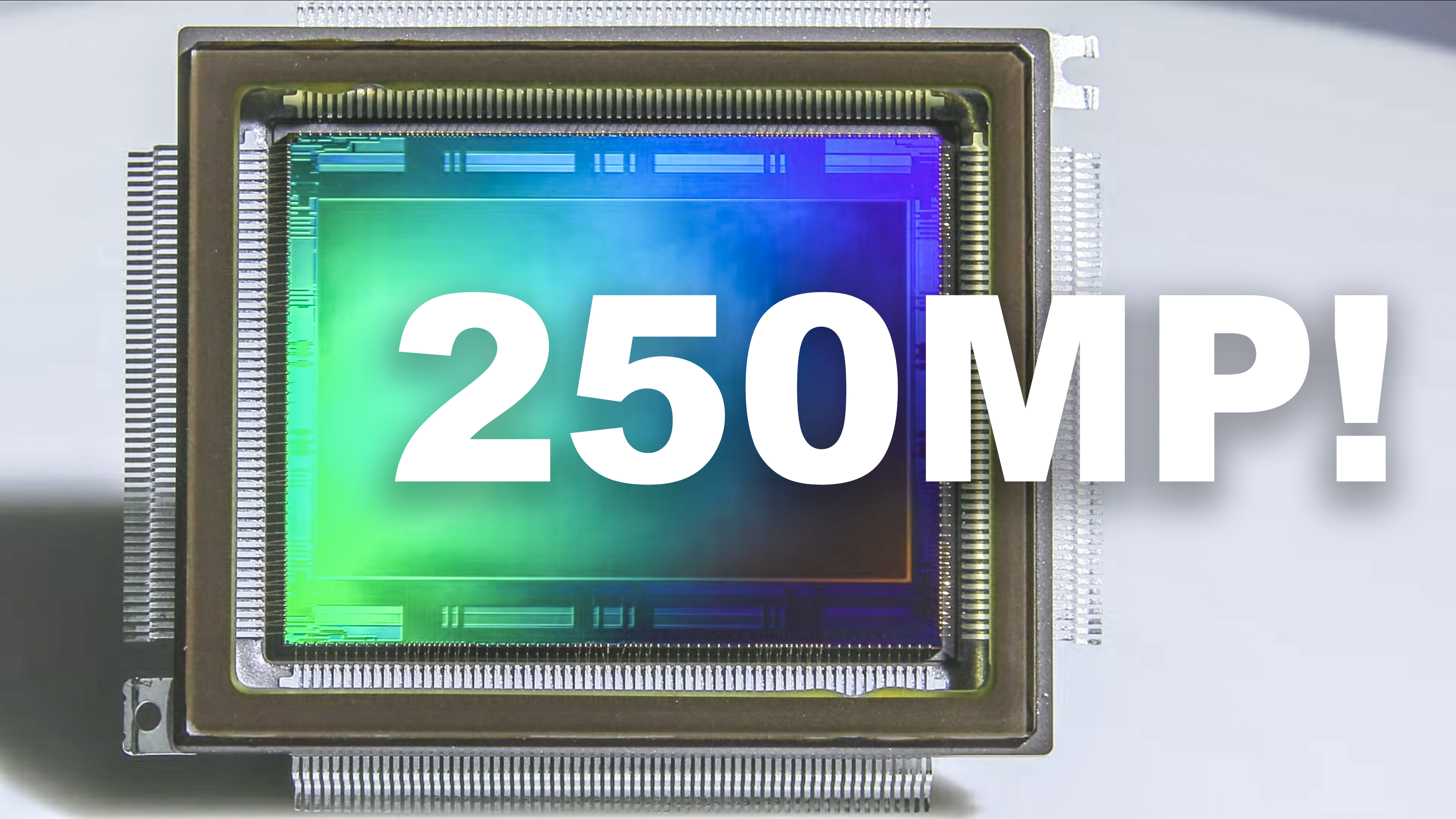250MP sensor unleashed by Canon!
Canon unleashes a 250MP (yes, really!) image sensor – and it's not even full-frame!

Canon has dropped a bombshell by releasing a pair of brand new image sensors with an astounding resolution of 250MP (yes, 250 million pixels).
If you thought that the 100MP Fujifilm GFX 100, or the current resolution king, the 150MP Phase One XT, offered the ultimate in hi-res imaging, think again. The Canon LI8020SAC (color) and LI8020SAM (monochrome) have two-and-a-half times more megapixels than Fuji's medium format monster – and Canon's sensors aren't even medium format. In fact, they're not even full frame.
These new sensors are, in fact, APS-H – a 28.7 x 19mm sensor size that is moderately smaller than the 36 x 24mm full frame format. Squeezing that many megapixels on such a compact sensor is incredibly impressive.
The resolution delivered by the LI8020SAC / LI8020SAM is a whopping 30 times higher than 4K – that's in the region of 115,200 x 64,800 pixels (!!!), next to the comparatively minuscule 3840 × 2160 of 4K. The video below illustrates just what this means in terms of resolution – you can zoom in 125x and still get a 1080p image!
This sensor is designed for industrial video use, so don't expect to see it in the Canon EOS R1 or another imminent EOS camera, but it's certainly proof that the manufacturer is making some amazing breakthroughs with sensor technology. The official blurb from Canon follows.
"The LI8020SAC (color)/LI8020SAM (monochrome) ultra-high resolution CMOS sensor features a pixel pitch of 1.5 μm (micrometer) and a resolution of approximately 250 million pixels, which provides detailed images in a wide range of applications and situations. The sensor will help meet the needs of manufacturers to inspect flat panel displays, which frequently exhibit 4K and sometimes even 8K content.
"The sensor can also be a tool for video production, digital archiving, wide-area monitoring, and the medical industry by providing ultra-high resolution and ultra-high-speed signal readouts. Due to the ultra-high pixel count of the sensor, images can be captured that maintain incredible image quality, even if an area of the moving or still image has been cropped and enlarged using an electronic zoom.
The best camera deals, reviews, product advice, and unmissable photography news, direct to your inbox!
"The new sensor can capture video at an ultra-high-resolution that is approximately 125 times higher than Full HD (1920 × 1080 pixels) and about 30 times higher than 4K (3840 × 2160 pixels). Still images can be captured at a speed of approximately five frames per second even when reading all the pixels. A fast signal readout of 1.25 billion pixels per second helps to avoid the potential of any signal delay or deviation. The rapid signal readout is achieved by advancing circuit miniaturization and signal processing technology.
"When the Read Return on Investment (Region of Interest) feature is utilized, the frame rate of the sensor can be increased by selecting an area and reducing the amount of information to be read. If a user doesn’t need the input of every pixel, the ROI readout function allows you to read every pixel at five fps, 8K at 24 fps, 4K at 30 fps, and Full HD at 60 fps. The sensor also features a “thinning-out read function” that enables high-speed readout by reducing the number of vertical pixels to be read out of the full shooting area, allowing selection of an output data format that suits users’ needs."
Read more:
Fujifilm GFX 100 review
Phase One XT review
The 12 highest resolution cameras you can buy today: ultimate pro cameras

James has 25 years experience as a journalist, serving as the head of Digital Camera World for 7 of them. He started working in the photography industry in 2014, product testing and shooting ad campaigns for Olympus, as well as clients like Aston Martin Racing, Elinchrom and L'Oréal. An Olympus / OM System, Canon and Hasselblad shooter, he has a wealth of knowledge on cameras of all makes – and he loves instant cameras, too.
